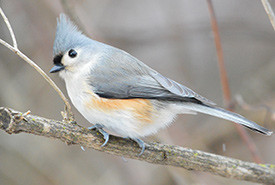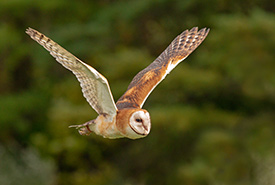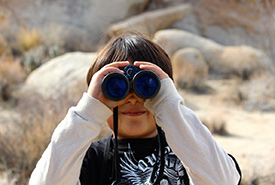50 bird species and the sounds that they make

Tufted titmouse (Photo by Jocelyn Anderson, Wikimedia Commons)
While many of the birds included are not native to Canada (but may be present as farm animals, pets or invasive species), it is still enriching to listen to birds from around the globe. Some examples of native Canadian birds on the infographic are American crow, American robin, black-capped chickadee, horned owl and pileated woodpecker. To learn more about the natural ranges of these birds, check out eBird.
If you are a budding birding enthusiast, a pollinator-friendly gardener, a child eager to learn about birds, a hiker, camper, a free spirit, an animal lover, or just anyone longing for spring, then you should check out this infographic that celebrates 50 bird species and the sounds they make! To experience the interactive version, go here, where you willl find lovely illustrations, helpful mnemonics, and maps that illustrate the regions each bird is found in.
Related content

Partial graphic of 50 bird species and the sounds they make. Courtesy of AAA State of Play (Click on the image to see the full graphic)
Celebrating the sounds of spring
One of the most delightful heralds of spring is birdsong. Migratory songbirds, such as warblers, thrushes and vireos, return north to take advantage of the abundance of fresh resources that spring delivers. Many backyard birdwatchers and gardeners in southern Ontario claim that one of the first calls they hear in the spring is the tufted titmouse’s clear, rapid whistling of “peter-peter-peter.” Other bird species like black-capped chickadee do not migrate, filling the skies across Canada with their signature “chickadee-dee-dee” call year-round. You can help them during the winter by providing sunflower seeds in a bird feeder and leaving dead trees and fallen trunks to provide shelter.
Why do birds sing?

Barn owl (Photo by Peter K Burian, Wikimedia Commons)
Have you ever wondered why birds sing and call? The tufted titmouse’s whistling may sound like whimsical springtime fun to our ears, but for them, it is a complex system with key functions. The primary purpose of bird vocalization is to attract mates. Experiments show that the variety, clarity and power of a bird’s song indicates its physical fitness and suitability as a mate. The second purpose is territory defence. Birds use song to defend boundaries. Since the quality of a bird’s song indicates their strength and health, other birds interpret it for how formidable an opponent it might be in a battle. Birds even use birdsong to communicate across species. For example, mobbing calls are used to recruit individual birds in the area, so they can rally together and drive out a predator, such as an owl or eagle.
How birding encourages children to embrace nature

Child with binoculars (Public Domain)
Learning how to identify bird sounds is also a wonderful way to get children curious about the wonders of nature. This infographic incorporates a game-like component to keep children engaged, and sounding out the mnemonics can be a fun activity to build reading and vocal skills. Encouraging children to explore wildlife topics is an important first step in raising a generation devoted to conservation.
How you can help birds, and why it matters
If you want to help out these extraordinary birds on their journeys, you can introduce more native plants into your yard, embrace naturalization and put out bird feeders (with a few basic guidelines). We owe them our help — not just because they provide beauty and auditory entertainment, but because they play a vital role in environmental health. Here’s how:
- Birds control pests. They eat 400 to 500 million tons of insects annually!
- Birds pollinate plants. Around five per cent of the plants that humans use for food and medicine are pollinated by birds.
- Scavenger birds quickly clean up animal remains that may carry deadly diseases, such as rabies and tuberculosis. Over its lifetime, a vulture provides waste disposal services worth around $11,600 USD!
- Birds spread seeds through their droppings. They bring plants back to barren ecosystems, and even carry plants across oceans to new land masses. Just by eating and pooping, they help shape the flora we enjoy today.
- Birds help protect marine ecosystems. Seabird droppings provide fertilizer for coral reefs, speeding up growth.
We will explore the importance of conservation and endangered birds further in a future post. For now, enjoy the joyful diversity of birdsong!


